By Nate Launer, VCE’s Alexander Dickey Conservation Intern
Back in May, when summer was fast approaching, I made a resolution to wake up early and experience sunrise out on the trail as many times as I could manage. Now, in mid-August, after nine Mountain Birdwatch surveys in the pre-dawn hours, and many early mornings on Vermont’s lakes and ponds, I can say that I have watched the sun rise and fall with a quiet peacefulness over New England’s landscape more times than I could have hoped for. My many memories of such breathtaking views have been highlighted by those from the ridgeline of Mount Mansfield, where I have had the unique opportunity to band birds with VCE in early morning’s light.
Each of my five outings to Mansfied involved setting up mist nets on trails that scatter across the ridgeline when we arrive in early evening. These nets of fine nylon mesh – nearly invisible to the human (or avian) eye – are used to harmlessly capture small songbirds. We carefully collect the entrapped birds each hour, attach to each a uniquely numbered aluminum band for permanent identification, and take a range of measurements before releasing them. Our evening banding tends to be relatively short and quiet, with only a couple hours of netting, before we close the nets at dusk. We then reopen them a few hours later in the pre-dawn for a morning-long session that can be very busy. To my surprise and great satisfaction, after only five banding field trips, the routine has become quite comfortable for me, as I’ve begun to master the intricacies of handling these small, delicate creatures. And, although being roused by the alarm for the usual 3:45 am start time, after crawling into our sleeping bags near midnight, certainly took some getting used to, our sleep deprivation was quickly remedied by cherished cups of coffee brewed on the camp stove.
Our two final summer visits to the mountain made for some of the season’s most memorable banding sessions, with blue skies and warm weather, an enthusiastic crew of volunteers and friends, and the capture of many unique bird species.
During our late July session, we had the good fortune to bring along several VCE friends and supporters, who made our time on the mountain lively and fun. And, our banding was highlighted by mist net captures of several new species for the year, including an out-of-habitat Rose-breasted Grosbeak and Black-and-white Warbler, along with a myriad of others such as Golden-crowned Kinglets, juvenile Yellow-rumped (also known as Myrtle) Warblers, Blackpoll Warblers, an American Robin, a Yellow-bellied Flycatcher, and several Swainson’s Thrushes. Although the evening effort yielded fewer birds than we typically encounter, on our closing “net run” we managed to catch a Bicknell’s Thrush, delighting our visitors, many of whom had come to see this very bird.
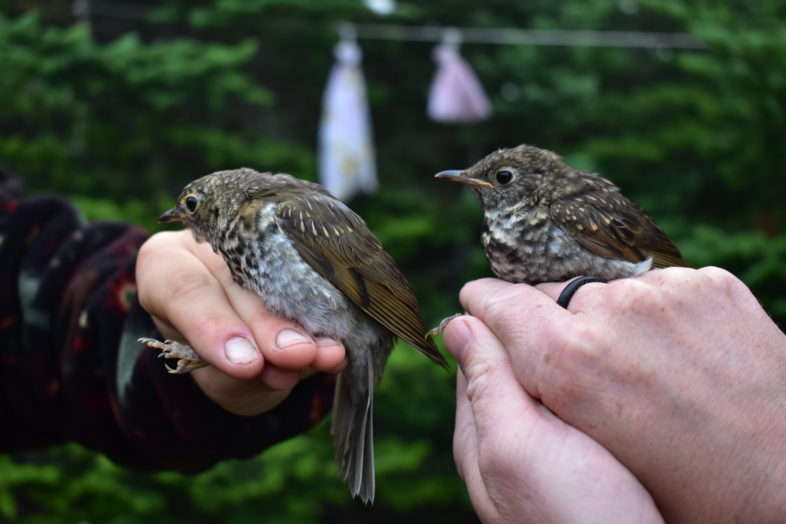
Juvenile Swainson’s Thrush (left) and Bicknell’s Thrush (right) – a challenging identification! / © Nate Launer
After furling nets for the night, well after dark, we found ourselves hiking back to the VCE banding “station” (the back of Chris Rimmer’s Prius) by the light of our headlamps. The night sky was clear and cloudless, glistening with the light of every star in a way that often occurs only on warm, still summer nights or the bitter cold evenings of winter. When we reached the summit parking lot, we were treated to a spectacular view of the planets Saturn and Jupiter through VCE friend Ali Wagner’s spotting scope. Later that night, in the comfort of the warm ski patrol lodge, which has been VCE’s overnight “home” on Mansfield for the past 25 years, we all joined in for a late dinner while sharing stories of our many bird encounters, before finally falling asleep outside under the stars.
On our final visit during the first week of August, we concluded VCE’s summer bird banding season with a chance to put our new skills to the test. With a small group consisting of me, fellow intern Kirsti Carr, Chris Rimmer, colleague Spencer Hardy, and photographer Chuck Gangus, banding was non-stop, as we frequently checked nets, attached leg bands to nearly 50 birds, and recorded measurements. Our rewards were the capture of several exciting species that included a Bay-breasted Warbler, a Canada Warbler, a Black-throated Blue Warbler, and a sleek Cedar Waxwing.
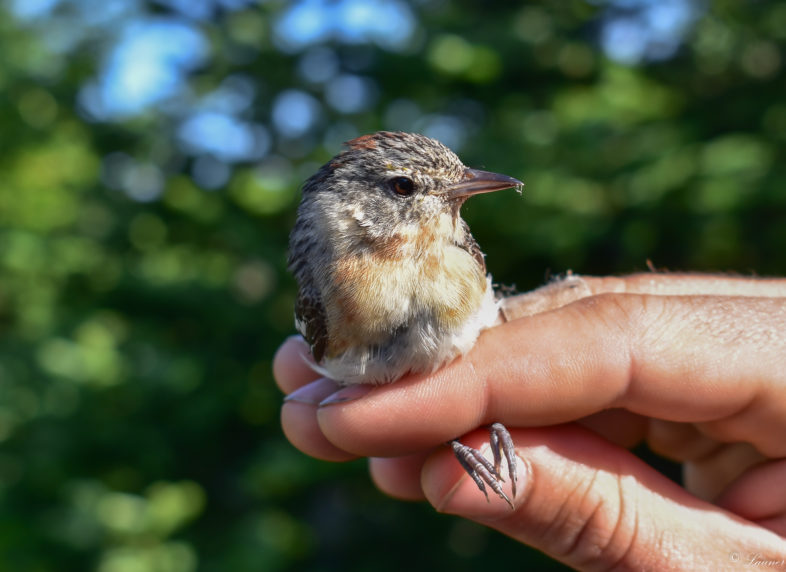
A mist-netted adult female Bay-breasted Warbler, very unusual on Mt. Mansfield in summer and likely a failed or early-dispersing breeder. / © Nate Launer
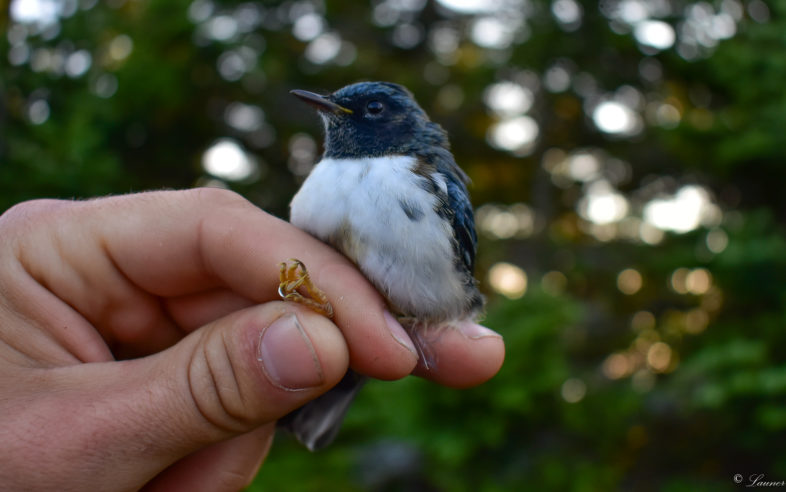
Male Black-throated Blue Warbler, the most common non-local species among VCE’s mist net captures in late summer and autumn. / © Nate Launer
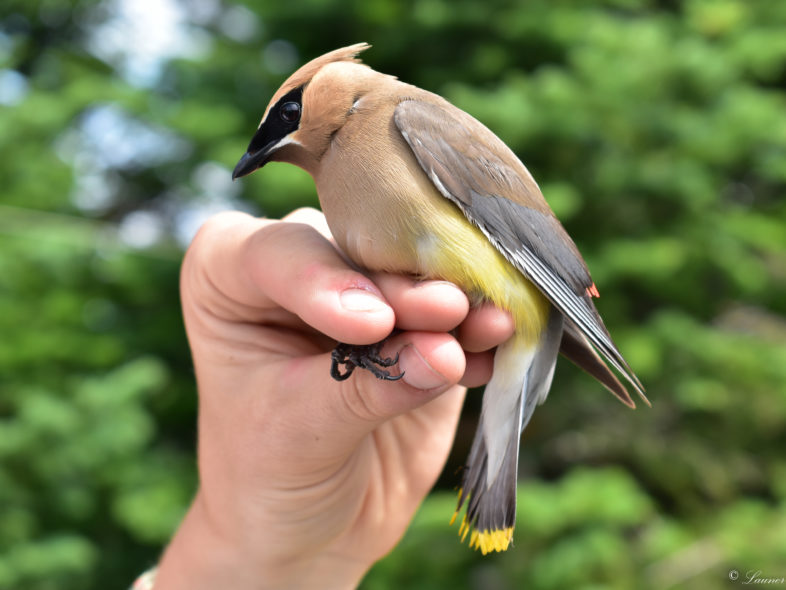
A sleek adult female Cedar Waxwing, a species seldom captured in VCE’s mist nets on Mt. Mansfield. / © Nate Launer
Having practiced over several weeks the techniques needed to disentangle birds from a mist net, properly handle them, attach their identifying leg bands, determine their age and sex, assess their condition, and measure and weigh them prior to release, this final trip was a perfect chance for me to hone my newfound skills and become more comfortable as a bander. Although I know I have much still to learn, I’m eager to find myself banding many more birds in the future. I can’t wait for my next chance to wake up and watch the sun rise, inspired by the morning chorus of bird song as I begin another day of mist netting and banding.
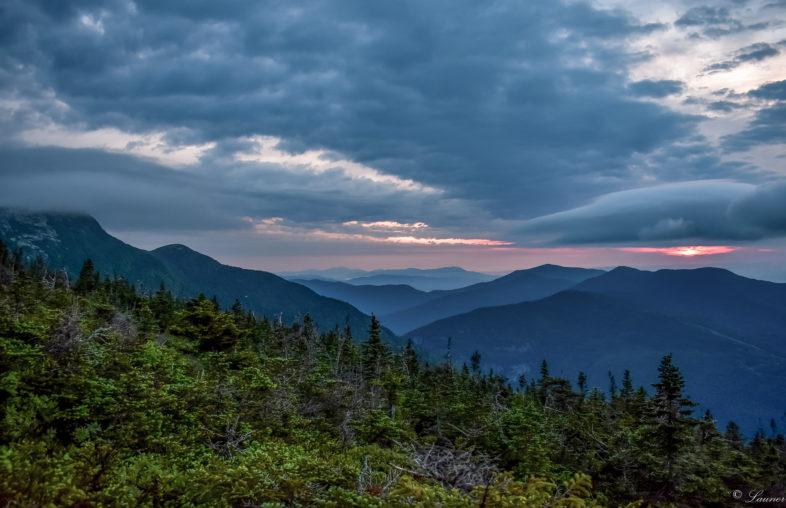
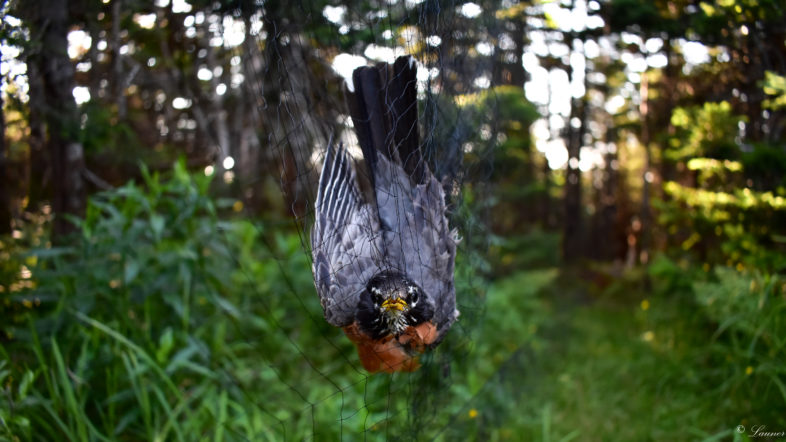
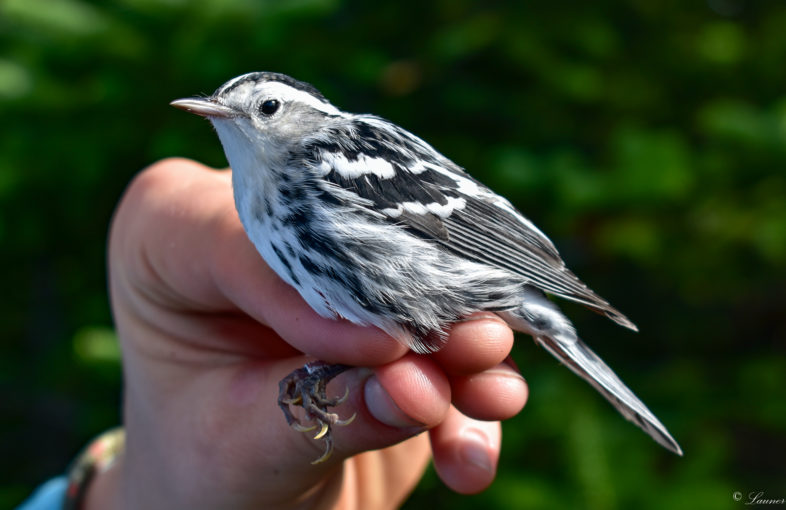
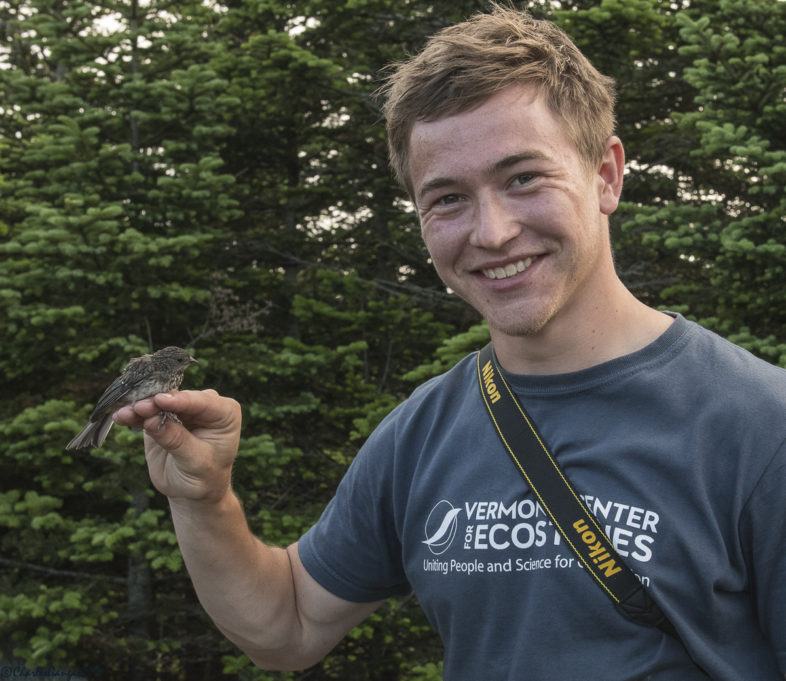

So uplifting to read your report and reflect on the truly fragile nature of the planet we inhabit. Brings back memories of work for my Bird Watching Merit Badge as a Scout with my dad.
Very nice write up, Nate. Now tell us how to tell the difference between Bicknell’s and Swainson’s!